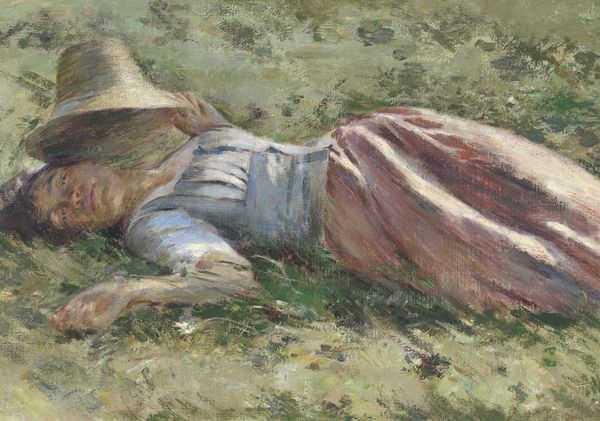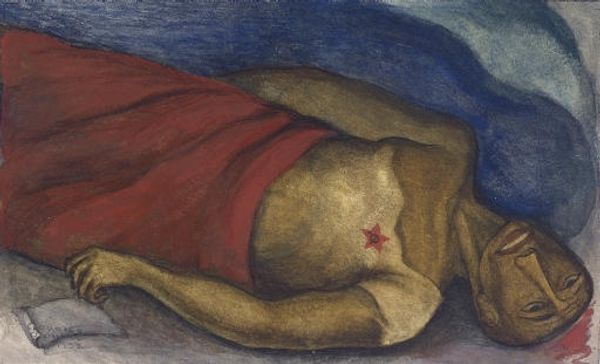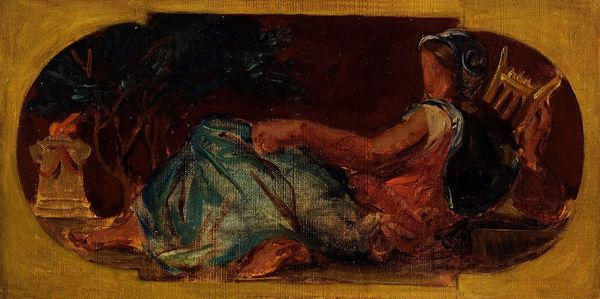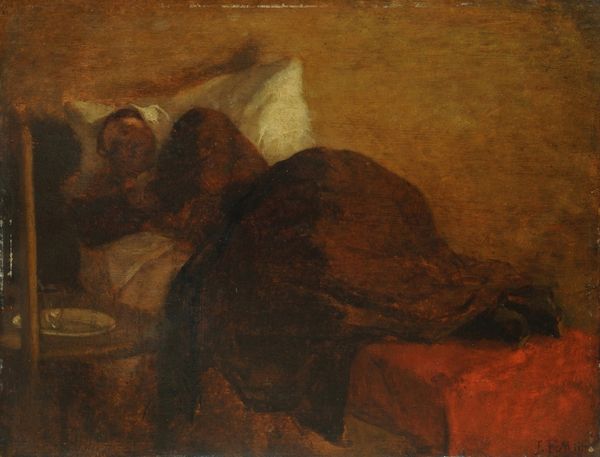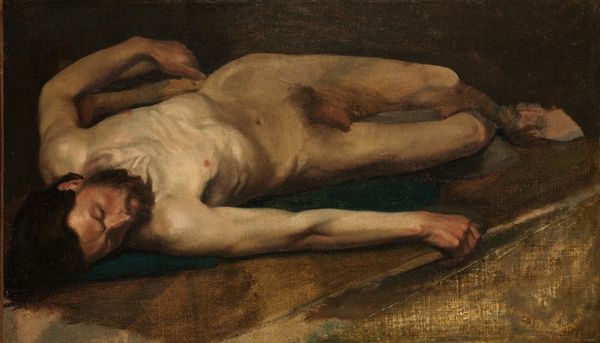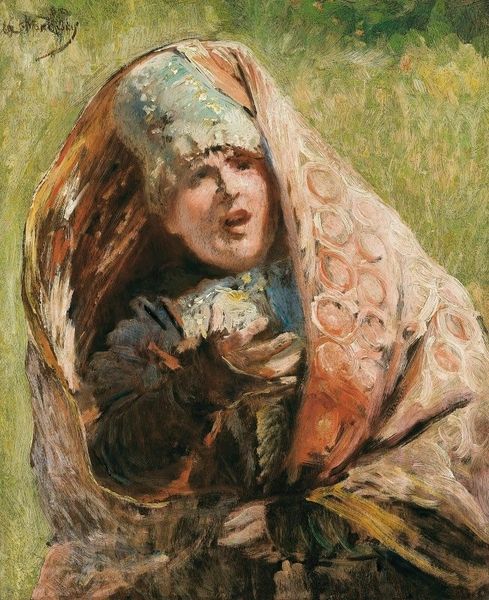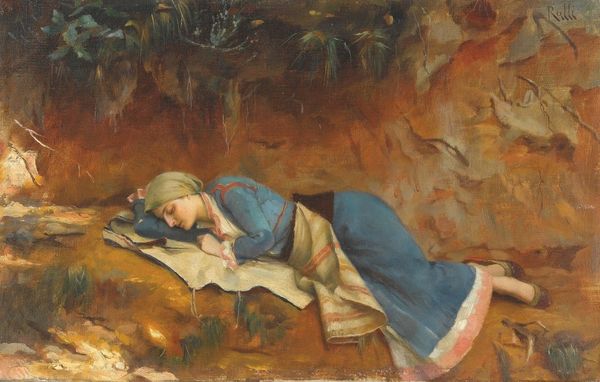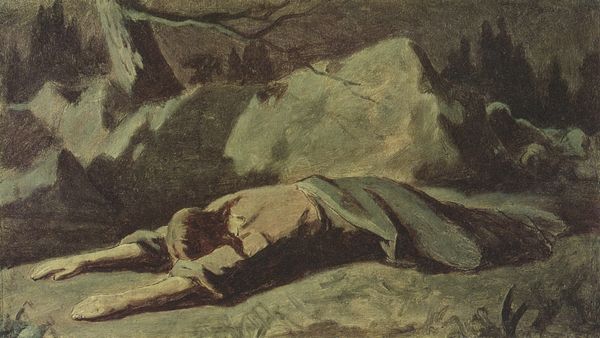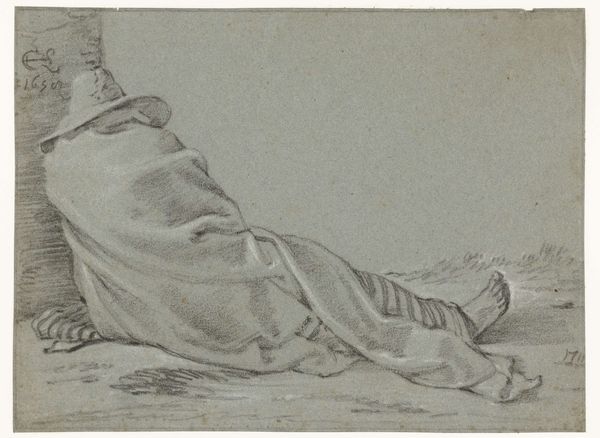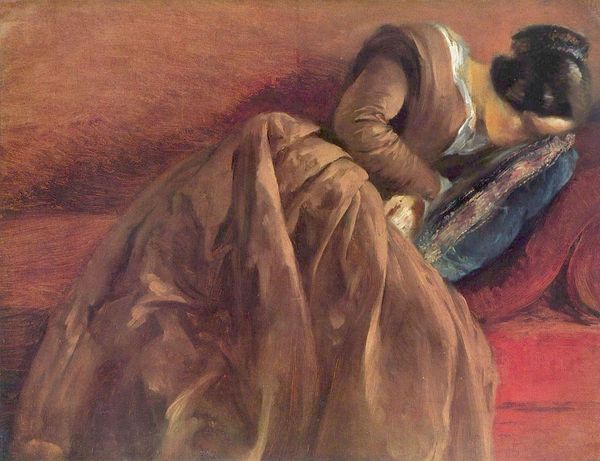
Copyright: Public Domain: Artvee
Editor: This is Jozef Hanula’s "Study of a Wounded Soldier," painted with oil around 1895 or 1896. It’s a pretty stark image. There’s something unsettling about the man’s peaceful expression juxtaposed with what’s clearly a battlefield setting. How do you read this painting? Curator: The painting resonates with the period’s fascination with nationalism and military prowess, while also revealing a contrasting, and critical, undercurrent. How is the glory of battle usually depicted, and how does this subvert expectations? Editor: Right! It’s definitely not the triumphant battle scene you might expect. He's not posed heroically; he’s vulnerable. The red clothing and the neutral-toned chainmail make him look defeated and it isn’t idealized. Curator: Precisely. Hanula painted this during a time of intense nationalistic fervor, particularly amongst Slavic communities. The artwork serves as a counter-narrative to that prevailing sentiment. It forces us to question the cost of such fervor on the individual level. It becomes less about valor and more about the human cost. Does this make sense to you? Editor: Absolutely. So, by depicting the soldier this way, Hanula critiques the romanticized view of war that was popular at the time? It challenges the dominant narrative. Curator: Exactly. And how might this raw, realistic portrayal resonate with a contemporary audience, particularly in light of our modern-day conflicts? Think about that. Editor: It feels surprisingly relevant, that’s for sure. It's easy to get caught up in the grand narratives of conflict, but paintings like these bring it back to the individual experience and make you consider the real consequences. It’s powerful to consider the politics behind what is being said through imagery. Curator: Yes, a reminder of the human stories often lost in grand historical narratives. This exploration highlights art’s role not just as a reflection, but as an active participant in shaping cultural understanding.
Comments
No comments
Be the first to comment and join the conversation on the ultimate creative platform.

